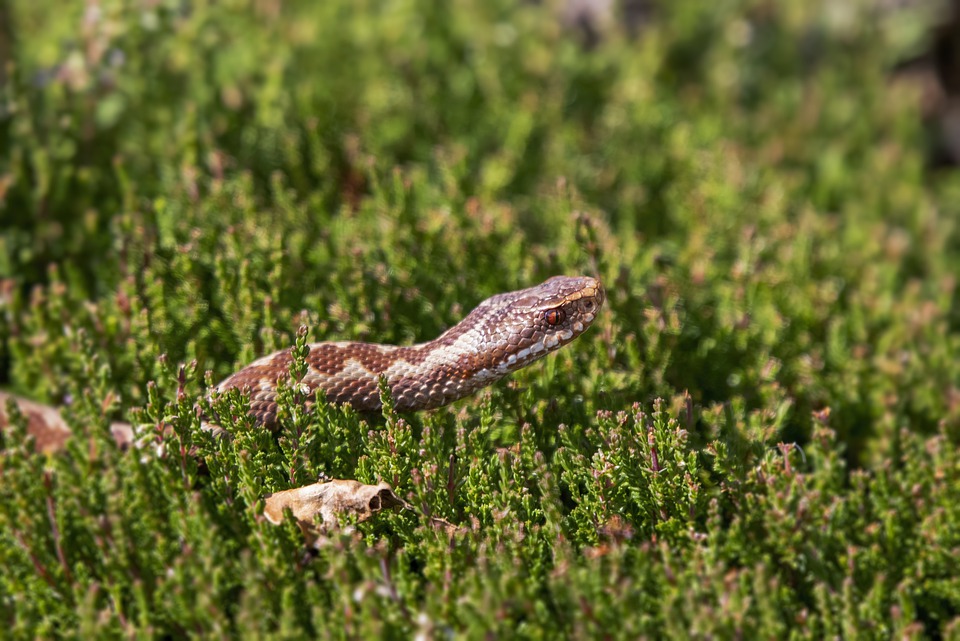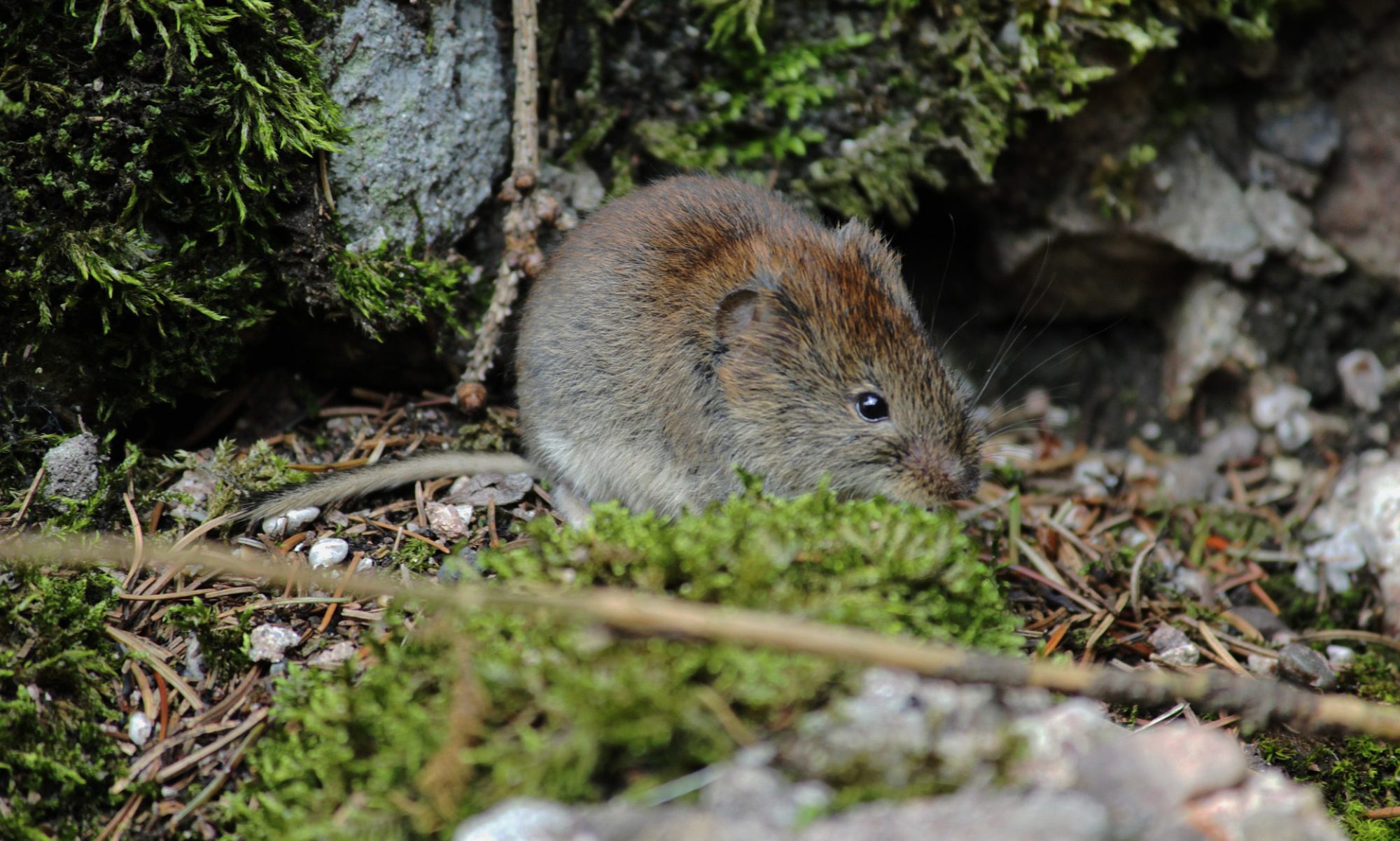
The whole snake family has a rather strange evolutionary history. Snakes’ ancient ancestors (who were also the ancestors of lizards) progressed from above-ground life, to living and moving about underground, burrowing through the earth. This subterranean lifestyle meant they’ve evolved to have relatively poor eyesight. To compensate, snakes picture their surroundings using their tongues, which collect chemicals in the air. On retracting the tongue, this transfers the chemicals to their ‘smell’ organ (called Jacobson’s organ). The adder (Vipera berus) is, of course, also unique in being Britain’s only venomous snake. They use venom to help kill their prey, small mammals and chicks. But adders should not be feared – they will only bite you to defend themselves from a serious threat, like being handled or stepped on.
How do I identify one?
Adders are easy to identify – they bear the unmistakable ‘diamond’ or zigzag pattern down the length of their backs. They also have red eyes, with vertical pupils like a cat’s. Males are often off-white with black diamond markings – while females, often chunkier looking, are usually of a light-brown colour combined with dark brown diamond markings. However, it isn’t uncommon to find adders with black colouration (melanistic is the term for this characteristic). If you find a black snake, it’s likeliest to be an adder, so keep your distance, and treat it respectfully.
Where do adders live?
They can be found across various open habitats, like commons, moorland, cliff tops, downland, open woodlands, and rail embankments. They’re common across the UK, except in England’s central counties. Adders are known to favour heathland, especially in warm weather, enjoying basking in the sun. They hibernate from November to February, often within disused animal burrows.
How can I encourage them?
As adders aren’t frequently spotted in gardens, the most useful thing you can do to help adders, is to support snake conservation charities such as the Amphibian and Reptile Conservation Trust. The ARC do excellent work to preserve habitats where adders like to live.
Where can I spot one?
Adders are easiest to spot in spring and autumn, sunbathing. There are significant numbers of adders at heathland locations, like the New Forest, and Studland Bay in Dorset; there are also big populations in Dumfries & Galloway, as well as the Pembrokeshire coast.
In fact, when it comes to their spread through the country, the adder (Vipera berus) has the edge on the UK’s other two snake species. Why? Because the adder gives birth to live young. Embryos in externally-laid eggs can’t withstand colder regions – whereas a baby adder develops while staying warm inside its mother’s body, a trait which lets it live further north (even into Scotland), than the grass snake or the smooth snake, which both lay eggs.
Remember, if you find an adder, to watch from a distance. Adders – like many potentially dangerous animals – are more scared of humans than we often realise. They will only attack if they are threatened or antagonised, for example, if they’re deliberately handled – or mistakenly trodden on. Should you get bitten, treat it as serious and get some immediate medical attention. Even so, adder bites are extremely unlikely to be life-threatening – to put it in context, deaths from adder bites are much less common than those from bee or wasp stings.

